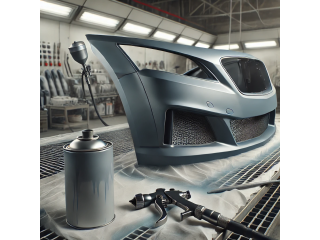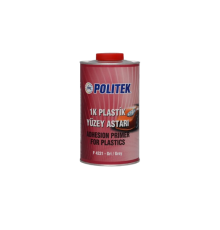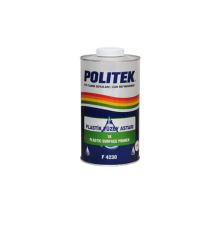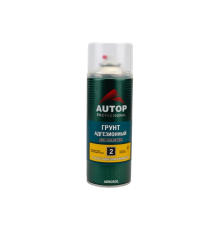Plastic primer is a specialized coating designed to create a durable bond between plastic and paint. In the automotive, furniture, and construction industries, plastic parts require specific preparation before painting, as this material has low adhesion (the ability to bond). POLITEK plastic primer helps address this issue by creating a smooth, resilient finish for paint that prevents flaking and cracking over time. In this blog, we’ll explore the purpose of plastic primer, how to apply it correctly, and its advantages and disadvantages in detail.
Why Is Plastic Primer Necessary?
Plastic is characterized by its smoothness and chemical inertness, which hinders the reliable adherence of paint to its surface. Without a specialized primer layer, paint may not apply evenly and can quickly chip and fade due to external factors. Plastic primer helps avoid these issues by creating an intermediary layer that the paint bonds well to, providing long-lasting adhesion. The main functions of the primer are:
- Increasing adhesion — Primer improves the bond between paint and plastic.
- Protecting the surface — Primer provides protection against UV radiation, moisture, corrosion, and mechanical damage.
- Smoothing the surface — Primer helps even out microscopic defects in the plastic, which is especially important for the final paint finish.
Application Methods
To achieve maximum efficiency from a plastic primer, it's essential to follow the correct application technique. Here are the main steps:
Surface preparation – The plastic surface should be cleaned of dirt, dust, and grease, which can reduce adhesion. Using antistatic and cleaning solutions will help remove all potential contaminants.
Applying the primer – Primer is typically applied using an aerosol can or a professional spray gun. For a high-quality coating, it’s recommended to spray it in even, overlapping movements, monitoring the thickness of the layer.
Drying – After applying the primer, it must dry to adhere well to the surface. Drying time depends on the type of primer and the ambient temperature but usually takes 15 to 30 minutes at room temperature.
Re-application and sanding – If needed, a second coat of primer can be applied and lightly sanded to achieve an even smoother surface before painting.
Application Methods
Plastic primer is in demand in various industries. Let’s look at where and how it can be effectively used:
Automotive tuning and repair – The most common application is the repair and painting of plastic car parts, such as bumpers, moldings, mirrors, and spoilers. The primer provides a reliable base for automotive paint, which withstands temperature fluctuations and environmental impacts.
Furniture industry – It is used on plastic furniture parts to create a durable and stable coating, protecting the item from scratches and fading.
Household electronics and appliances – The primer allows for a more aesthetic and durable appearance of household items, game consoles, TVs, and other plastic products subject to daily use.
Areas of Use
Apart from traditional application areas, plastic primer is increasingly used in other sectors, including:
- Repair and restoration – In furniture and construction, primer is used to restore plastic elements, extending their service life.
- Decorative art projects – Used in creating decorative elements and sculptures for outdoor and interior design.
- Production of advertising materials – Applied to paint plastic signs and advertising structures, ensuring resistance to UV and atmospheric exposure.
Advantages and Disadvantages
Using POLITEK plastic primer has several advantages and disadvantages.
Advantages:
- High adhesion – Ensures excellent bonding with plastic, enhancing the paint's durability.
- Protection from scratches and chips – The coating becomes more resistant to mechanical damage, especially important for external parts.
- Long-lasting finish – Paint applied over primer lasts longer and is resistant to fading and peeling.
- Ease of use – Primer can be applied both manually and with automated equipment.
Disadvantages:
- Application difficulties – Primer requires adherence to a specific application technique to achieve an even coating.
- Requires equipment – High-quality coating on large objects may require specialized equipment.
- Dependency on drying conditions – Drying requires exact compliance with conditions; otherwise, the adhesion quality may deteriorate.
Conclusion
Plastic primer is an indispensable element in painting plastic parts, ensuring reliable bonding and protection of the coating. Whether applied in the automotive field, household use, or design, this material becomes a key link in ensuring the longevity and aesthetics of the finished product.




